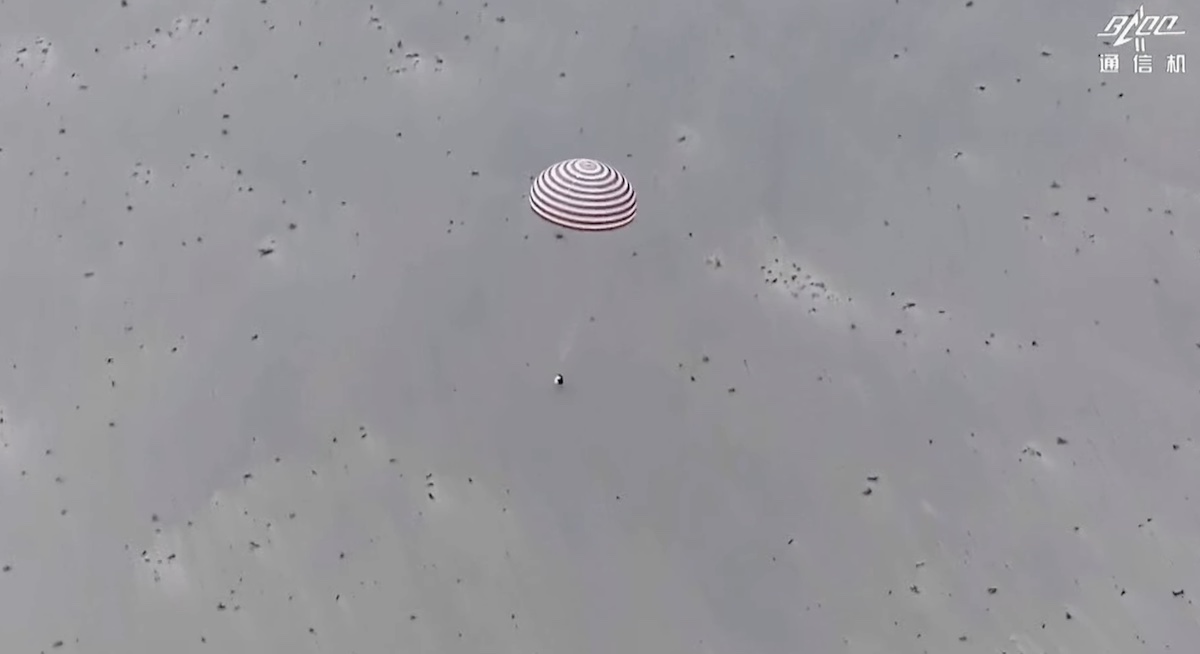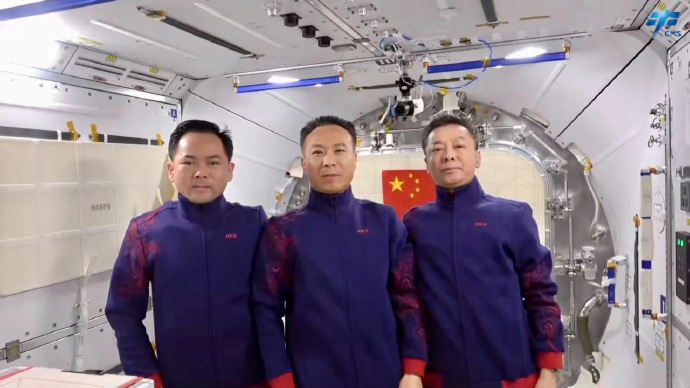
Three Chinese astronauts departed the Tiangong space station Saturday and landed in the remote Gobi Desert of northwestern China, capping a six-month expedition that included four spacewalks and a host of experiments in the microgravity environment of low Earth orbit.
The three-man crew floated inside their Shenzhou 15 spacecraft and undocked from the Tiangong space station at 9:29 a.m. EDT (1329 UTC) to begin a roughly nine-hour flight before re-entry and landing at 6:33 p.m. EDT (2233 UTC).
Commander Fei Junlong and Chinese astronauts Deng Qingming and Zhang Lu closed out a 186-day mission in orbit. It was the first flight in space for Deng and Zhang, and the second for Fei, who was part of the first group of astronauts selected to join China’s human spaceflight program.
The three astronauts completed numerous experiments during their stay on the Tiangong space station. Shenzhou 15 was the fourth crewed mission to the Tiangong complex since China began construction of the space station in low Earth orbit in 2021.
Touchdown!
Shenzhou 15 is back on Earth with a successful landing in northwestern China, bringing home astronauts Fei Junlong, Deng Qingming, and Zhang Lu after 186 days on the Tiangong space station — the longest Chinese crewed space mission to date.https://t.co/VxuXl0zQcR pic.twitter.com/JYj6zKpGvM
— Spaceflight Now (@SpaceflightNow) June 3, 2023
With the space station’s initial assembly complete, China’s space program is settling into regular six-month crew flights to the orbiting research outpost. Shenzhou 15’s crew was replaced by three astronauts who launched May 29 on the Shenzhou 16 mission, beginning a four-day handover when the Tiangong station was home to a six-person crew.
The three Shenzhou 16 crew members will remain at the station until November, when they will be replaced by the Shenzhou 17 mission.
The Tiangong space station is about 100 metric tons in mass, roughly a quarter of the mass of the International Space Station. While the ISS accommodates a seven-person permanent crew, the Tiangong complex can host three astronauts for long-duration missions.

Shenzhou 15 launched with its three-man crew Nov. 29 and docked with the Tianhe core module at the Tiangong space station later the same day.
After departing the Tiangong space station, the Shenzhou 15 spacecraft jettisoned its orbital habitation module, which will remain in orbit until aerodynamic drag pulls it back into the atmosphere. The ship’s engines then fired for a deorbit burn to slow down for re-entry, then Shenzhou’s propulsion module separated, leaving the landing capsule to bring the three astronauts back to Earth.
The re-entry capsule, protected by a heat shield, encountered temperatures of several thousands of degrees as it streaked through the atmosphere. After a brief build-up in G forces, the spacecraft deployed a main parachute to slow its descent for touchdown at the Dongfeng landing site in the Inner Mongolia region of northwestern China.
Email the author.
Follow Stephen Clark on Twitter: @StephenClark1.
- SEO Powered Content & PR Distribution. Get Amplified Today.
- EVM Finance. Unified Interface for Decentralized Finance. Access Here.
- Quantum Media Group. IR/PR Amplified. Access Here.
- PlatoAiStream. Web3 Data Intelligence. Knowledge Amplified. Access Here.
- Source: https://spaceflightnow.com/2023/06/03/shenzhou-crew-capsule-brings-home-three-chinese-astronauts/